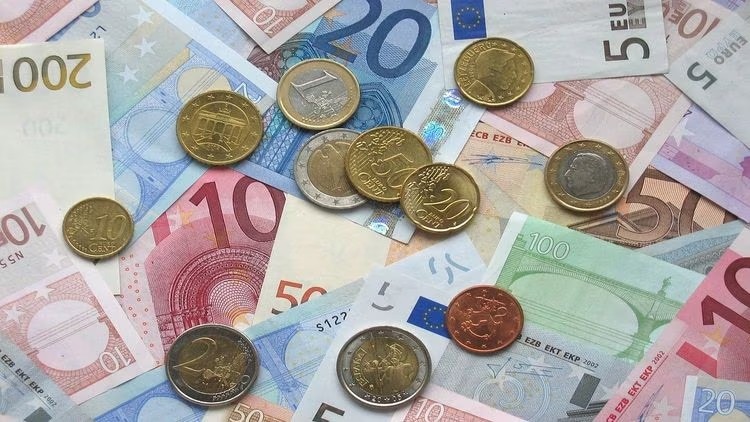-
2026/03/15
New York(EWR) -
2026/03/26
Barcelona
(Updated: June, 19, 2025 06:06)
Spain Travel Tips and Information
Official Name
Kingdom of Spain
Capital
Madrid
Population
Country Code
About 48.8 million people
ES
Country Code (international calls)
+34
The flight time to Spain is approximately 8 hours. Check the climate, currency, religion, manners, other information of Spain below. Wishing you pleasant travels to Spain.
Spain, a constitutional monarchy, is situated on the Iberian Peninsula in southwestern Europe. It shares borders with France, Portugal, the small nation of Andorra, and the British territory of Gibraltar. Spain also has several exclaves on the African continent across the Strait of Gibraltar, adjacent to Morocco.
Compare Airfares for Flights to Spain
Compare Airfares for Flights to Spain
Compare Airfares for Flights to Spain
Compare Airfares for Flights to Spain
Compare Airfares for Flights to Spain
Local Climate / Weather
Spain experiences a diverse climate, from Mediterranean warmth in coastal areas to continental climates inland. Summers (June to August) are typically hot and dry, especially in southern Spain, with temperatures reaching 30-40°C in cities like Seville and Madrid. Winters (December to February) bring mild weather along the coast but cooler temperatures and occasional snowfall in the interior and mountainous regions, with cities like Madrid seeing lows of around 5°C. Spring (March to May) and autumn (September to November) offer moderate temperatures and are generally pleasant, ideal for exploring both cities and countryside.
Currency & Tipping
Currency
Spain uses the Euro (€), symbolized as "EUR" on exchange platforms and credit card statements. Banknotes come in denominations of 5, 10, 20, 50, 100, 200, and 500 euros, while coins are available in 1 and 2 euros, as well as cents (1, 2, 5, 10, 20, and 50). To get the best value, consider exchanging to euros through banks before you travel, as exchange rates in Spain can vary, and fees may apply.
Tipping
Tipping in Spain is generally more relaxed than in other European countries, and it’s not always expected. However, leaving a small tip for good service is appreciated. Here’s a breakdown of when and how much to tip in Spain’s common scenarios: 1. Restaurants and Cafés: It’s common to leave a small tip if service is good, typically rounding up the bill or leaving around 5-10% for a more formal dining experience. Service charges may already be included, so check your bill to avoid double tipping. 2. Bars: Tipping is optional at bars, though you can leave spare change or round up the bill for exceptional service. 3. Hotels: Porters and housekeeping staff may appreciate tips. Giving €1–€2 per bag for porters and €1–€5 for housekeeping during your stay is considered polite. 4. Taxis: Rounding up the fare or leaving small change (about 5–10%) is customary. 5. Tour Guides: For group tours, consider tipping around €5–€10 per person, depending on the quality of service. By familiarizing yourself with Spain’s currency and tipping practices, you’ll be prepared to manage your expenses and show appreciation for great service. These tips ensure a seamless, hassle-free trip to Spain for travelers, from currency exchanges to local customs.
Useful Travel Information

Voltage & Electrical Outlets
Spain operates on a 230V supply voltage with a frequency of 50Hz. The standard plug types are Type C and Type F, which have two round pins. Travelers might need an adapter to use devices with flat or angled pins, and for those appliances that only support 110V, a voltage converter will be necessary to avoid damage.

Internet Connectivity
Spain offers a well-connected internet environment, making it easy for travelers to stay connected throughout their trip. Free Wi-Fi is widely available in cafes, hotels, shopping centers, and many public spaces. Major cities like Madrid, Barcelona, and Valencia have extensive Wi-Fi coverage. For more reliable access, travelers can purchase local SIM cards from major providers like Movistar, Vodafone, or Orange. Prepaid data plans are affordable, providing sufficient data for browsing, social media, and video calls.
Water for Consumption (Drinking Water)
Tap water in Spain is generally safe to drink across the country, especially in urban areas. Cities like Madrid and Barcelona have high-quality tap water that meets European Union standards. For travelers who prefer bottled water, it’s available everywhere, from supermarkets to convenience stores. Travelers sensitive to changes in water may still want to purchase bottled water for added peace of mind.
Culture, Religion & Social Etiquette
Culture
Spain boasts a rich blend of cultures, from its ancient Roman and Moorish influences to its vibrant modern-day customs. Known for festivals like La Tomatina and Fallas de Valencia, Spanish traditions are lively and steeped in history. Spain is also celebrated for flamenco dance, bullfighting, and a cuisine that emphasizes social dining. Visiting Spain you can enjoy local tapas bars where sharing small plates is a common social practice. Spanish cultural events, such as Semana Santa (Holy Week), highlight the country’s religious heritage through processions and rituals.
Religion
Roman Catholicism has a strong presence in Spain, with numerous cathedrals, churches, and religious festivals scattered across the country. While modern Spain is multicultural and secular, Catholic traditions remain deeply embedded. Visitors will find similarities with religious customs, especially during major events like Christmas and Easter, which are celebrated with processions, feasts, and family gatherings.
Social Etiquette
Spanish people are generally warm, friendly, and open. Physical gestures, like kisses on both cheeks when greeting friends, are common, but handshakes are appropriate in formal settings. Punctuality is often flexible, with a more relaxed view on time, especially in social settings. Dining etiquette encourages a slow-paced, enjoyable meal, with ample conversation. It’s also respectful to greet store staff or others with a friendly “Hola” or “Buenos días” and to say “Gracias” after receiving service.
Food Culture
Spanish cuisine is renowned for its vibrant flavors, diverse ingredients, and cultural influences that have shaped the country's food traditions over centuries, making it an exciting culinary experience for travelers. At the heart of Spanish cuisine are tapas, small, flavorful dishes that offer a taste of various Spanish flavors in one meal. Tapas are commonly enjoyed in bars across Spain, where friends and families gather to share plates and savor everything from jamón ibérico (cured ham) to gambas al ajillo (garlic shrimp) and patatas bravas (fried potatoes with a spicy tomato sauce). For those who love seafood, Spain offers delights like paella, a fragrant rice dish typically made with seafood, chicken, and saffron, bringing an iconic flavor that's perfect for lunch in Valencia or along Spain’s coastal areas. Another must-try is tortilla española, a thick omelette made with potatoes and onions, widely available in restaurants and street food stalls alike. Street food is abundant in Spain, with churros con chocolate being a popular choice for a sweet snack or breakfast treat. These deep-fried dough sticks are served with thick, rich chocolate for dipping, a perfect blend of crispy and creamy that appeals to those with a sweet tooth. For a taste of modern Spanish gastronomy, travelers might enjoy visiting renowned restaurants in cities like Madrid and Barcelona. In Madrid, the Mercado de San Miguel is a bustling food market where visitors can sample authentic tapas, fresh seafood, and even international dishes. In Barcelona, Travelers can explore La Boqueria, a historic market offering an impressive selection of Spanish produce, meats, and artisan foods. For an upscale experience, El Celler de Can Roca in Girona and Asador Etxebarri near Bilbao have gained international acclaim, offering innovative Spanish dishes crafted from local ingredients. Spain’s food culture reflects a rich history and passion for fresh, quality ingredients, making it an ideal culinary destination for travelers eager to explore diverse flavors and traditional dining customs.
Major Tourist Attractions & UNESCO World Heritage Sites
Major Tourist Attractions
Spain is renowned for its iconic landmarks, such as the Prado Museum in the capital city of Madrid and the Sagrada Família in Barcelona. The historic city of Toledo, often called the "City Frozen in Time since the 16th Century," showcases its rich cultural heritage. Other notable sites include Granada, the last Islamic stronghold on the Iberian Peninsula, and Córdoba, the former capital of the Umayyad Caliphate. Mallorca, an island to the east of Valencia, is a favorite summer retreat for German and British tourists.
UNESCO World Heritage Sites
Spain is home to 44 UNESCO World Heritage Sites, ranking third globally in total. In Barcelona and eastern Spain, notable sites include Antoni Gaudí's works, the Palau de la Música Catalana, the Hospital de Sant Pau, the archaeological ensemble of Tarragona, and Poblet Monastery. In Madrid and central Spain, highlights include the historic center of Segovia with its Roman aqueduct, the ancient city of Toledo, the Monastery and Site of El Escorial, and the university and historic precinct of Alcalá de Henares. Andalusia and southern Spain feature landmarks such as the Alhambra, the Generalife, and the historic center of Córdoba. Northern Spain boasts treasures like Santiago de Compostela (Old Town), the Way of St. James, the Roman Walls of Lugo, and Las Médulas. The Canary Islands also offer unique sites such as San Cristóbal de La Laguna and Garajonay National Park.
Travel FAQs
Which airports are the most popular for flights to Spain?
Major airports in Spain include Adolfo Suárez Madrid–Barajas Airport (MAD) in Madrid, Barcelona El Prat Airport (BCN), Málaga-Costa del Sol Airport (AGP), Bilbao Airport (BIO), Palma de Mallorca Airport (PMI), and Ibiza Airport (IBZ).
Do I need to pay for public toilets in Spain?
Yes, public toilets typically require a small fee of around 0.5-1€. However, many popular tourist attractions offer free restroom facilities for visitors.
How safe is Spain? Are there specific precautions to take?
Barcelona, in particular, has a high incidence of petty crime, such as pickpocketing, and the local embassy advises caution. Use protective gear like passport covers and anti-theft bags to safeguard your belongings.
Is smoking allowed in Spain?
Indoor smoking is prohibited in public areas, such as train stations, airports, supermarkets, and within restaurants or bars. Violations incur fines of 30 to 600 euros. Outdoor smoking, however, is widely accepted, including on streets, outside dining areas, and terrace seats.
Will I be able to communicate in English in Spain?
While rural areas may have limited English speakers, most tourist-friendly regions, even outside major cities, have English-speaking staff at attractions and accommodations.




